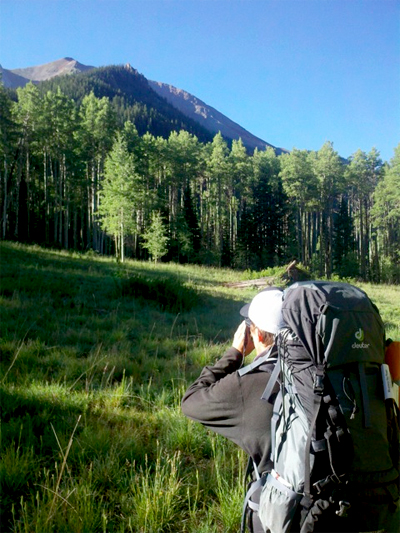By SEAN MCCOY
Uber-engineered in a German sort of way, the AirContact series of packs from Deuter Sport GmbH have all the features you need to haul gear on big trips into the wilds, and then some. A litany of straps, pockets, zippers, adjustments, and touches like an air-channel back panel and a pair of “pivoting hip fins” set this luxury pack apart.
For anyone in love with minimal design in backpacks, the AirContact series will seem quite overbuilt. But its bells and whistles are for the most part smart, and if you need to handle 40 or 50 pounds of load all the extras start to make sense.
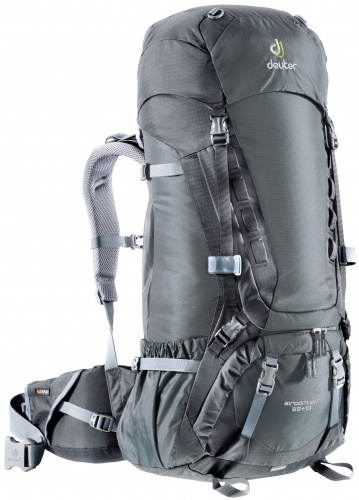
I tested the series’ AirContact 55+10 pack in Norway and Colorado on two big trips this past month. For the most part I am happy with the design. I am also happy with the price — at $239, the pack is a fair deal for its build quality and feature set.
When empty, the pack weighs nearly 6 pounds, which is not light. But copious comfort demands a materials cost, and with its foam padding, cush back panel, and multiple adjustment options there is simply a lot going on here.
In its multiple pockets the pack carries about 3,300 cubic inches (55 liters) worth of gear, which is enough for a week of backpacking if you pack right. It’s a nice size for mountaineering, too, especially if you tether a tent to the outside on the way up.
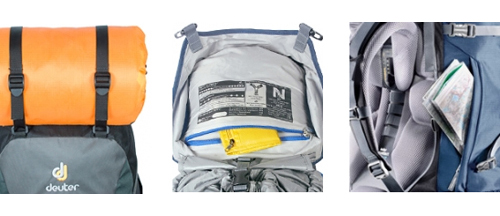
I took the pack on a recent two-day trip in Colorado. We hiked 18 miles in the mountains and I went not-light on purpose with gear, carrying about 45 pounds of food and equipment for the overnight adventure.
On the trail, the pack spread its load across my back, hips and shoulders so evenly I sometimes forgot it was there. The pack never demanded attention from sore body parts or from a load that swayed as I stepped high over an obstacle or bounced down a section of trail.
For fit, I made one adjustment while hiking. The pack’s belt and harness were too widely spaced, and I was forced to make a quick torso-length adjustment after about two miles on the move. The adjustment was fast, easy and intuitive — I simply opened a Velcro strap, moved the shoulder strap system down, and then closed the Velcro for a better fit. It worked.
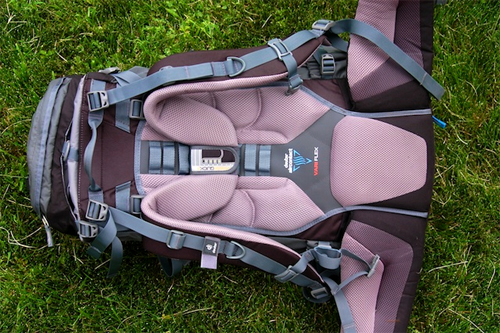
Gear organization was easy. Main compartment access is slick thanks to a large U-shape zipper and a separate bottom compartment area. The pack lid has two pockets, there are mesh pouches on the sides for water bottles or tent poles, and there’s a hydration area inside with routing for a drink hose from a bladder.
In addition, Deuter lists the following as features: flexible hip fins on the belt; compression straps; aluminum frame; a “positionable” lid pocket; hip belt pocket; daisy chains; ice axe loop; double-layer base; and an integrated, detachable rain cover.
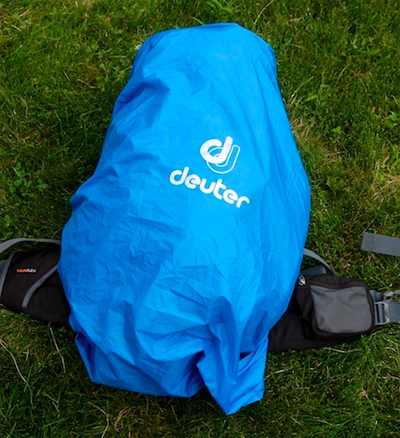
I used many of these features on my trips. (The attached rain cover, for example, came in handy during a heavy thunderstorm and kept the bag and its contents bone-dry inside.) The pack’s design is smart, not cumbersome. Written out the pack might sound busy but in use it is not. Most all the buckles and adjustments and features are intuitive and in the right place to do their job hauling a load of gear on down the trail.
—Sean McCoy is a contributing writer based in Denver.
